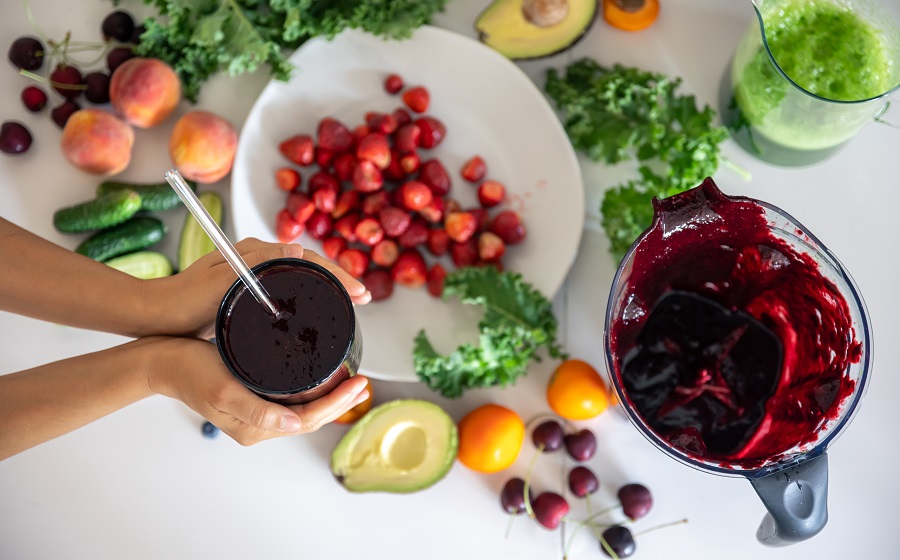|
|
|
What Makes a Superfood Truly Worth the Hype'
When you come across the term "superfood," it’s easy to wonder if it’s just clever marketing or something more. You might think it’s about exotic berries or pricey powders, but there’s real science behind some of the claims. The key is understanding which foods live up to the label and why. If you want to know what actually sets these foods apart from the rest, you’ll need to go a step further. Understanding the Superfood ConceptWhat precisely qualifies a food as "super"? While the term superfood frequently appears on packaging and in articles, it lacks an official definition. The term originated in the 1990s as part of food marketing strategies to emphasize foods dense in nutrients such as vitamins, minerals, fiber, and antioxidants. Foods labeled as superfoods, including berries, nuts, and leafy greens, have been supported by scientific research for their nutritional benefits. However, it's important to note that the superfood label is unregulated and can sometimes be misleading. No single superfood provides a comprehensive solution to achieving optimal health. Experts advise that consuming a diverse range of whole foods is most beneficial. The emphasis should be on maintaining a balanced diet rather than focusing solely on the latest superfood trend. Key Nutrients That Set Superfoods ApartSuperfoods are distinguished by their high nutrient density, offering a concentrated source of antioxidants, omega-3 fatty acids, and essential nutrients such as vitamin C and fiber. For instance, blueberries contain antioxidants like anthocyanins, which are associated with reducing inflammation and supporting brain and heart health. Foods like salmon and walnuts are rich in omega-3 fatty acids, which are known to enhance brain function and contribute to cardiovascular health. Dark leafy greens are notable for their vitamin C content, which plays a role in boosting immune function and may help protect against chronic diseases. Additionally, chia seeds provide a significant amount of fiber, and green tea is recognized for its antioxidant properties, both of which can aid digestion and reduce inflammation. Superfoods With Proven Health BenefitsUnderstanding the unique nutrients that certain foods provide helps explain why they're often classified as "superfoods" in health research. Blueberries, for instance, are notable for their high antioxidant content, particularly anthocyanins, which have been shown to reduce inflammation and support brain health. Both salmon and walnuts are rich sources of omega-3 fatty acids, which research indicates can enhance brain function and support cardiovascular health. Dark leafy greens such as kale and spinach are good sources of essential vitamins and carotenoids, which may help reduce inflammation and decrease the risk of certain diseases. The various types of bird's nest, such as white, red, and gold, are a delicacy derived from the saliva of swiftlets and are valued for their rich protein content and potential immune-boosting and skin-enhancing properties. Green tea contains catechins, a type of antioxidant that has been associated with protection against chronic diseases. The inclusion of these foods in a balanced diet can provide health benefits that are supported by scientific studies and nutritional research. How to Incorporate Superfoods Into Everyday MealsIntegrating superfoods into everyday meals can be achieved with minor dietary adjustments. Incorporating dark leafy greens into soups, salads, or stir-fries can contribute to a balanced diet due to their nutrient density. Berries, known for their high antioxidant content, can be added to breakfasts or blended into smoothies. Regular consumption of green tea may support metabolism. Chia seeds, which are high in omega-3 fatty acids, can be sprinkled onto yogurt, salads, or smoothies. Avocados can be included in salads and sandwiches to provide heart-healthy fats. Opting for whole grains instead of refined grains and increasing the intake of fruits and vegetables are additional strategies. These changes can enhance nutritional intake and highlight the benefits of superfoods in a diet. Separating Science From Marketing HypeHave you ever considered why certain foods suddenly become popular in kitchens everywhere? The food industry frequently generates interest in these so-called "superfoods" by emphasizing substantial health claims. While some of these foods are marketed as offering health benefits—such as antioxidants that may support heart health or combat free radicals—the scientific evidence doesn't always substantiate these assertions. The term “superfood” originated as a marketing strategy rather than a scientific classification. Because labels aren't regulated, consumers may end up paying more for products with limited benefits. It's important to note that many foods touted as superfoods for preventing health issues may be overemphasized, while everyday fruits and vegetables can often provide similar health benefits. ConclusionWhen you choose superfoods backed by science, you’re giving your body real advantages—not just falling for buzzwords. Integrating foods rich in antioxidants, omega-3s, and essential vitamins into your meals helps you fight inflammation, protect your heart and brain, and lower disease risk. Don’t let marketing alone guide your choices. Focus on proven benefits, and you’ll truly get the most from your food. With a balanced approach, you can enjoy genuine, lasting health from superfoods. |
Copyright © 2010-2018 101HealthyRecipes.com. All Rights Reserved All trademarks are the property of their respective owners. |